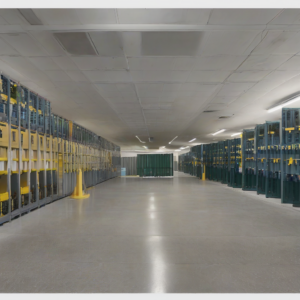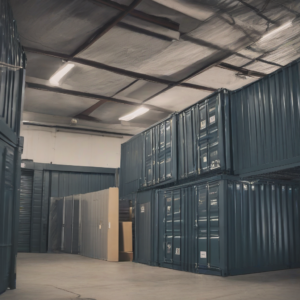RAID Storage: A Deep Dive into Redundant Array of Independent Disks
Redundant Array of Independent Disks (RAID) is a data storage virtualization technology that combines multiple physical hard disk drives (HDDs) or solid-state drives (SSDs) into a single logical unit. This improves performance, increases reliability, and provides data redundancy. Understanding RAID is crucial for anyone managing data storage, whether for personal use, small businesses, or large enterprises. This comprehensive guide delves into the intricacies of RAID, explaining its various levels, benefits, and considerations.
Understanding the Basics of RAID
At its core, RAID works by distributing data across multiple drives. This distribution can happen in various ways, leading to different RAID levels, each with its own strengths and weaknesses. The key benefits of RAID include:
- Increased Performance: By spreading data across multiple drives, RAID can significantly improve read and write speeds, especially in situations requiring high I/O (input/output) operations. This is particularly beneficial for applications that demand quick access to large amounts of data.
- Enhanced Reliability: RAID offers data redundancy, protecting against data loss due to drive failures. Depending on the RAID level, data can be reconstructed even if one or more drives fail. This reduces downtime and ensures data availability.
- Improved Data Availability: The redundancy built into RAID ensures that data remains accessible even if a drive fails. This is crucial for businesses and organizations that rely on continuous data access.
- Scalability: RAID systems can be easily expanded by adding more drives, providing flexibility for growing data storage needs.
Different RAID Levels: A Detailed Comparison
Various RAID levels exist, each employing a different method of data striping, mirroring, and parity. Choosing the right RAID level depends on the specific needs of the system, balancing performance, reliability, and cost.
RAID 0: Data Striping
RAID 0, also known as striping, simply distributes data across multiple drives without any redundancy. This results in significantly improved performance, as read and write operations are performed concurrently across all drives. However, RAID 0 offers no fault tolerance; if a single drive fails, the entire array becomes inaccessible, and all data is lost.
- Advantages: High performance, increased storage capacity.
- Disadvantages: No redundancy, single point of failure.
- Suitable for: Applications requiring high performance but with no critical data, such as video editing workstations.
RAID 1: Mirroring
RAID 1, or mirroring, duplicates data across two or more drives. This provides excellent redundancy, as data is mirrored on all drives. If one drive fails, the system can continue operating using the mirrored data on the other drive(s). Performance is generally good for reads, but writes are slower due to the data duplication.
- Advantages: High reliability, excellent data protection.
- Disadvantages: Expensive, reduced storage capacity (only 50% of the total drive space is usable).
- Suitable for: Applications requiring high reliability and data protection, such as database servers or critical business applications.
RAID 5: Striping with Parity
RAID 5 combines data striping with distributed parity. Data is striped across multiple drives, and parity information is calculated and distributed across the remaining drives. This allows the system to reconstruct data if a single drive fails. RAID 5 offers a good balance between performance and redundancy. However, it is susceptible to a phenomenon called “write penalty,” where writes can be slower than reads.
- Advantages: Good balance between performance and redundancy, relatively good storage capacity utilization.
- Disadvantages: Slower write performance due to parity calculations, susceptible to drive failure in some scenarios.
- Suitable for: Mid-range applications requiring both performance and data protection.
RAID 6: Striping with Dual Parity
RAID 6 is similar to RAID 5 but uses dual parity. This means that the system can tolerate the failure of two drives without data loss. This level provides even greater redundancy and data protection than RAID 5. However, the write penalty is even more significant.
- Advantages: High reliability, tolerates two drive failures.
- Disadvantages: Slower write performance, higher cost than RAID 5.
- Suitable for: Applications requiring extremely high reliability and data protection, such as mission-critical systems.
RAID 10 (RAID 1+0): Mirroring and Striping
RAID 10 combines mirroring and striping. It creates mirrored pairs of drives, and then stripes data across these pairs. This provides both high performance and excellent redundancy, making it a robust and efficient solution. However, it requires a minimum of four drives and has a relatively high cost.
- Advantages: High performance, high reliability, good scalability.
- Disadvantages: Expensive, requires a minimum of four drives.
- Suitable for: Applications requiring both high performance and high reliability, such as high-performance computing clusters.
Other RAID Levels
Beyond the common RAID levels discussed above, there are other less frequently used levels such as RAID 01 (striping and mirroring), RAID 50 (striping and parity), and RAID 60 (striping and dual parity). These combinations often offer further refinements in performance and redundancy but require more drives and more complex configurations.
Choosing the Right RAID Level
Selecting the appropriate RAID level requires careful consideration of several factors:
- Budget: Higher RAID levels, such as RAID 10 and RAID 6, require more drives and are thus more expensive.
- Performance Requirements: RAID 0 offers the best performance, but lacks redundancy. RAID 10 balances performance and redundancy effectively.
- Data Protection Needs: The level of data protection needed will dictate the choice of RAID level. RAID 1 provides the highest level of protection, while RAID 0 offers no redundancy.
- Number of Drives: Some RAID levels require a minimum number of drives. RAID 10, for instance, requires at least four drives.
- Data Capacity: Some RAID levels reduce usable storage capacity compared to the total raw capacity of the drives (e.g., RAID 1).
Implementing and Managing RAID
RAID can be implemented in hardware RAID controllers or through software RAID solutions. Hardware RAID controllers offer better performance and reliability, but are more expensive. Software RAID is a more cost-effective option, but can impact system performance, especially on older systems.
Managing a RAID system involves regular monitoring of the health of the drives and the overall system. Early detection of drive failures can help prevent data loss. Many RAID controllers and software solutions provide monitoring tools to track drive health and system status.
Beyond the Basics: Advanced RAID Concepts
Understanding hot-swapping, drive reconstruction, and RAID controller features is crucial for efficient RAID management. Hot-swapping allows the replacement of failed drives without shutting down the system, minimizing downtime. Drive reconstruction involves rebuilding the data on a replacement drive, restoring the array’s redundancy.
Different RAID controllers offer various features, such as advanced caching mechanisms, battery-backed write cache, and sophisticated monitoring tools. Understanding these features helps optimize RAID performance and data protection.
Conclusion (Omitted as per instructions)





